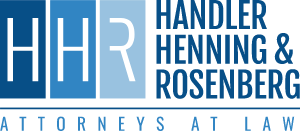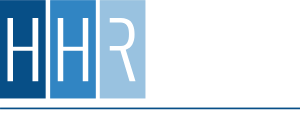No workplace is safe if an employer is negligent in their duties to protect their employees from occupational hazards. In some industries, however, the risks of serious injuries and fatalities are much higher than in others. This is especially true when companies focus more on saving money wherever possible, even if it's at the cost of vital safety measures for workers. One of the most dangerous jobs in Pennsylvania, with one of the highest fatality rates, is mining.
Recent Fatal Mining Accidents in Pennsylvania
The Mine Safety and Health Administration (MSHA) is one of the main regulatory agencies that oversees the mining industry. It provides mandates such as periodic safety inspections, evacuation training for workers, better communication between those above and below ground, and the prompt reporting of any accidents. As sensible as these regulations are, there are still many violations of even basic safety measures, which leads to preventable accidents and hazards that cause serious injuries, illnesses, and deaths.
According to the MSHA, some of the recent mining fatalities in Pennsylvania include:
- September 8, 2023, a miner at a surface mine was killed when a front-end loader dumped stone into a hopper in which the miner had been working.
- October 22, 2022, a coal miner died from drowning in an underground sump, who was sent down there alone without a means of communication and into a site where proper lock out/tag out procedures weren't used.
- March 2, 2022, a miner died when a rock brow detached from a pillar rib and struck the worker, perhaps due to a lack of adequate roof bolts being in place.
- January 7, 2022, a miner at an underground limestone mine was killed by a 170-ton rock falling from the roof onto the loader he had been operating.
- July 26, 2021, a worker at a cement facility fell to his death from a cement cooler because the mining site had failed to provide adequate wood planking and decks and had not supplied the worker with fall protection equipment.
- May 14, 2021, a machine operator was killed from the roof falling on him in an underground coal mine, because the roof lacking supports to hold it up. The mine operator in question had a history of not abiding by depth-of-cut requirements and not providing warnings of areas where the roof wasn't supported, and then had failed to prevent the machine operator from doing work under such an unsafe roof.
- October 27, 2020, a miner was killed from the roof falling on him while he was installing support for the roof, which was blamed on the mine operator failing to provide ground support and roof control measures.
Many of these accidents happened to experienced miners, not rookies. These tragic accidents were not the result of worker mistakes, but often were clearly the result of negligent management.
What to Do After a Mining Accident
If you or a loved one has been involved in a mining accident, the first priority is always medical care. After that, it’s essential to report the incident to your supervisor or safety officer immediately. Even if injuries seem minor, report them—because symptoms can worsen over time, and a delay in reporting could affect your eligibility for workers’ compensation.
Preserve any evidence you can. If safe to do so, take photos of the work area, the equipment involved, or anything that looks unusual. Get the names and contact information of any coworkers who witnessed the incident. Then, speak with an attorney experienced in mining and industrial injury cases. Your employer and their insurer will begin building their case right away—it’s vital that someone starts building yours too.
Occupational Hazards of Mining at a Glance
While there is a decent amount of documentation regarding fatal incidents in the mining industry, there are often many more underreported figures, such as serious injuries and occupational illnesses. Looking at both fatal and non-fatal injuries in mining, this industry is rife with serious dangers for workers.
It would take too long to list out all the serious injury and death hazards that mining presents, but some of the main risks that miners in Pennsylvania face include:
- Black lung disease: This incurable disease is caused by breathing in coal mine dust, and as it progresses, it will make it hard to breathe until it gets to the point where you eventually suffocate, or your heart gives out. The MSHA has reported that on average 1,000 people each year die from black lung.
- Equipment accidents: Struck-by and caught-in accidents account for as many as 20 amputated fingers each year in mines during maintenance and repairs, with maintenance and repair work accounting for an average of 180 hand and finger fractures and 455 lacerations each year in mining.
- Hearing loss: According to the CDC, one out of every four active miners has already started to experience hearing issues, and once they reach retirement, four of every five miners will officially have impaired hearing. With loud equipment and machinery operated at close quarters, mining leads most industries when it comes to levels of hazardous noise.
- Rock falls & roof cave-ins: Even when mines have regulation roof supports and other safety structures, rocks still fall through those beams and end up injuring up to 500 miners each year. Those roof support structures themselves can fall down and hurt or kill workers. The National Institute for Occupational Safety and Health (NIOSH) has said that ground falls kill up to 10 people each year and injure 800.
When Can You Sue Outside of Workers’ Compensation?
Most miners are covered by workers’ compensation, which provides medical and wage-replacement benefits without requiring a lawsuit. But there are situations where injured workers or their families may have the right to sue outside of workers’ comp. These include cases involving gross negligence, fatal safety violations, or injuries caused by defective equipment.
If a third party—like a subcontractor, machinery manufacturer, or negligent inspector—played a role in your injury, you may have grounds for a personal injury or wrongful death lawsuit. These claims can pursue damages not covered by workers’ comp, such as pain and suffering or full wage loss. An experienced attorney can help identify whether your situation qualifies and guide you through your legal options.
Legal Protections for Whistleblowers in Mining
Federal law protects miners who report unsafe conditions, file complaints, or refuse to work in dangerous environments. Under the Federal Mine Safety and Health Act of 1977, you cannot legally be fired, demoted, or otherwise retaliated against for speaking up about safety.
If you believe you were punished for reporting a hazard or asserting your rights, you have up to 60 days to file a discrimination complaint with MSHA. It’s also a good idea to speak with a lawyer who understands both workers’ rights and whistleblower protections in the mining industry.
Mining Accidents Are Preventable
While MSHA and other government agencies are tasked with miner safety, even when these regulators issue safety citations and fines to mining companies, those corporations can ignore those citations and fines with little to no penalty. Even once they do pay those overdue fines, it doesn't mean that they've resolved the underlying safety issues behind those citations.
Far too often, it can take outside legal action to demand that companies abide by safety regulations, such as workers' compensation or workplace injury claims from an injured miner or a wrongful death claim from a bereaved family member. These types of lawsuits can demand answers for a mining operator's negligence that led to a tragically preventable accident. Whether it was a lack of proper training, equipment, safety measures, or any other type of violation, mining companies ought to be held accountable when they fail to keep their workers safe. A skilled workplace accident attorney may be able to help families recover financial compensation and enforce changes in mining operations in order to prevent such an accident from happening again.
Since 1922, the personal injury attorneys at Handler, Henning & Rosenberg LLC have helped clients get the answers and financial recovery they need to move forward. Call (888) 498-3023 today for a free consultation.


